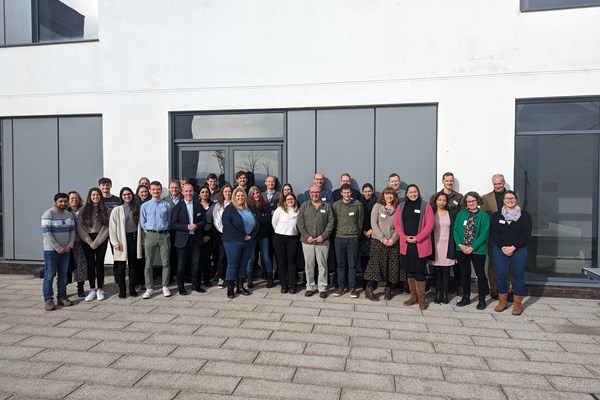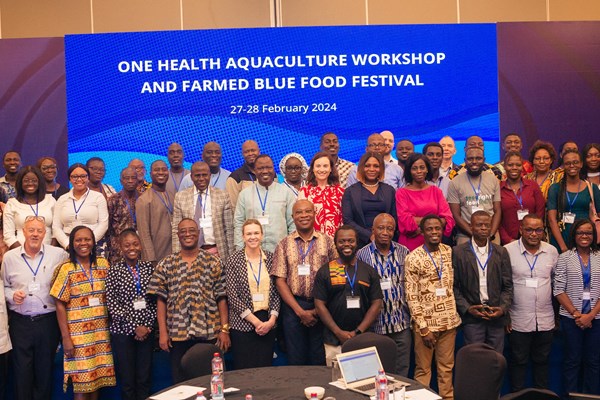Substance in Solvent (latest update)
6 April 2022
Substances in Solvents
At the OSPAR Offshore Industry Committee (OIC) 2019 meeting it was agreed that additional measures should be introduced to assess substances in solvents but the introduction of those measures in the Netherlands and UK was delayed due to impacts of the COVID-19 pandemic. In 2022 there will now be a roll out of new registration requirements regarding the biodegradation of substances in solvents.
Background
The OSPAR pre-screening and substitution warning schemes are intended to discourage the discharge of offshore chemical products that may lead to an accumulation of persistent substances in the marine environment. Under the pre-screening scheme, substances that are less than 20% biodegradable are assigned substitution warnings. In this way, it is aimed to prevent a build-up of persistent substances in the marine environment, where no effective removal option is available following their discharge.
Note, a substance can be classed as a substance under both REACH and OSPAR definitions but STILL require further characterisation and testing under the substances in solvents assessment.
The definition used by the OSPAR HMCS is shared with the later REACH Regulation (EU 2006):
“substance” means a chemical element and its compounds, in the natural state or obtained by any manufacturing process, including any additive necessary to preserve its stability and any impurity deriving from the process used, but excluding any solvent which may be separated without affecting the stability of the substance or changing its composition.
Unfortunately, this definition fails to provide adequate clarity to facilitate the assessment of certain substances that contain significant amounts of organic solvent. Of note is that stability does not mean emulsion stability, nor solubility.
The ambiguous status of solvents within this definition has major ramifications for the assessment of certain substances such as polymers, which are likely to include certain types of synthetic polymer, such as plastics which are in many cases persistent. The presence of these polymers in the ocean are of increasing concern. Polymers are frequently manufactured in organic solvents to facilitate handling without which they would be viscous liquids or solids. The readily biodegradable nature of most solvents means that their inclusion during testing can lead to persistent substances appearing to pass the OSPAR 20% biodegradation threshold and avoid a substitution warning as a result. This also may be a significant factor in whether the substance meets the 20% or 60% biodegradability threshold.
As a result, the substance definition for any substance manufactured in an organic solvent may give a misleading impression of biodegradability and is potentially available to any substance where removal could result in stability issues. The lack of interpretive guidance offered regarding the nature of the stability concern, and of the extent of solvent removal that could be accommodated, only exacerbates the problem.
It is noted that whilst REACH uses the same substance definition as OSPAR, its flaws have minor consequences by comparison to the REACH registration status and assessment. As noted above, a significant proportion of substances in solvents is made up of synthetic polymers. Such substances are exempt from REACH registration. Even if they were not, many such substances would still not receive PBT or vPvB designations (the closest analogies to OSPAR substitution warnings).
OSPAR agreed in 2019 that for substances in solvents, biodegradability data would in future be required for both the solvent and solute. This is to ensure that meaningful data are available to facilitate the pre-screening assessment, irrespective of any concerns associated with stability.
To allow correct assessment and to assist in the roll out program, it is important that suppliers characterise their substances well. Thus, the roll out will use percentage solvent present as the basis for cut offs. Failure to provide adequate characterisation information for each substance of these mixtures will lead to the substance/ products requiring requests for additional data. Under the first deadline, if adequate substance characterisation is provided regarding the proportion of each substance within the mixture, then this information will allow the assessment to be made at a later date (see schedule). It is the supplier’s responsibility that this data is provided in adequate time for assessment, and we advise any additional characterisation as a result of the changes are undertaken and made available as soon as possible.
In order to tackle this requirement, Cefas envisage three alternative approaches that suppliers should consider when submitting supporting information for substances that contain solvents:
1 Take no action
It will not be mandatory to provide further information upon the introduction of the new requirement: registrations will not be terminated, but biodegradability data provided for substances with greater than 10% organic solvent will no longer be considered valid. Under these circumstances, a default figure of 0% biodegradability will be assumed. The likely consequence of which is that the substance would be assigned a substitution warning for UK registered products and HMCS C for products registered for use in The Netherlands.
Suppliers may wish to consider this approach if the following criteria are met:
- The biodegradability of the substance, tested in the presence of solvent, is already less than 20%.
- The chemical product in question contains other substances that already carry substitution warnings, or
- Available information on the solute indicates that it will be unlikely to meet the 20% biodegradability threshold in the absence of solvent.
If none of these criteria apply, suppliers will need to provide data for the biodegradability of the solute and the solvent, with the provision of good quality literature data (Klimisch 1 or 2) for the latter recommended as the most convenient approach. For the solute, two correction approaches should be considered:
2 Theoretical Correction
The problem created by the presence of solvents in testing biodegradation is the proportion of the biological oxygen demand (BOD) measured that is attributable to the solvent rather than the solute. The maximum extent of the BOD is defined by the nature of the solvent and its abundance, such that it is possible to calculate a “worst case” correction to existing biodegradability data based on known compositional data for the solvent, assuming 100% mineralisation. This figure is the same as the theoretical oxygen demand (ThOD) for the solvent, with the relevant formulae provided in the OECD 306 protocol (OECD, 1992). The corrected BOD may then be used to compute a biodegradability figure for the solute alone.
The advantage of the theoretical correction is that it may be made based on existing data. This makes it a straightforward first option to explore, and suppliers may find this approach adequate, especially where the proportion of solvent present is low, and the size of the ensuing correction small.
3 Experimental Correction
If the application of the theoretical correction results in the biodegradability of the solute falling below 20%, suppliers may wish to consider commissioning a fresh test, in which a correction is made based on experimental data. Such a correction requires the simultaneous determination of the biodegradability of the substance (solute plus solvent) and the solvent alone in a new study, using the same seawater sample. It is not acceptable to attempt to correct an existing biodegradability figure for the substance (solute plus solvent) with solvent biodegradability data acquired under different sampling conditions. The reason for this is that the inoculum source is not the same and can introduce error into the results.
Please note that the biodegradation tests submitted will be reviewed during the assessment period.
A formula for the correction is provided in Appendix 7 to the current OSPAR Guidelines to the HOCNF.
Assessment process (Key RED arrow = No; GREEN arrows = Yes)
Timetable for assessment
|
Deadline for data submission |
Substance in solvent percentage solvent affected |
Target date for templates to be issued by |
|
31/12/2022 |
>50% or ‘unknown’ |
31/03/2023 |
|
01/06/2023 |
>30%-50% |
01/09/2023 |
|
31/12/2023 |
10%-30% |
31/03/2024 |
NOTE: - There are no plans at present to require data for substances in solvent where the percentage of solvent is <10% within the substance.
REFERENCES
EA Vik, S Bakke and R Gundersen, CHARM Technical Note 45: Substances versus Preparations: CHARM III Workshop 1, 23-24 January 1996, Apeldoorn.
EU 2006: Regulation (EC) No 1907/2006 of the European Parliament and of the Council of 18 December 2006 concerning the Registration, Evaluation, Authorisation and Restriction of Chemicals (REACH),
OECD, 1992: OECD 306 protocol for the determination of Biodegradability in Seawater
OSPAR, 2019: OSPAR Recommendation 2017/1 on a Harmonised Pre-screening Scheme for Offshore Chemicals, As amended by OSPAR Recommendation 2019/04
OSPAR, 2005: OSPAR Decision 2000/2 on a Harmonised Mandatory Control System for the Use and Reduction of the Discharge of Offshore Chemicals (as amended by OSPAR Decision 2005/1)
OSPAR, 2020: OSPAR Guidelines for Completing the Harmonised Offshore Chemical Notification Format (HOCNF) (OSPAR Agreement: 2012/05. Update 2020)
B Rowles, AO Cousins, N Geary, L Gregory, A Papachlimitzou, C Phillips, S Supple and M Wilczynska (2021) Substances in Solvents a biodegradation dilemma Chemistry in the Oil Industry XVII Sustainable chemistry: Towards Net Zero proceedings (1st-3rd November) p385-389





